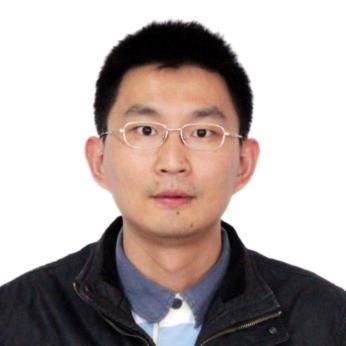2-7、高通量超导研究新进展
金魁
中国科学院物理研究所
摘要:In this talk, I will demonstrate the high efficiency of high throughput experimental methods in accelerating superconductivity research. A combination of high throughput and traditional experimentations opens a promising avenue to elucidate the key ingredient to the superconducting transition temperature (Tc).
First, a high throughput research on FeSe to establish the lattice-Tc library is initiated. We were able to fabricate film sample with gradient Tc from < 2 K to 12 K on a centimeter substrate by single pulsed laser deposition, using two sliding laser beams to create a gentle distribution of the beam density across a focused laser spot on a FeSe target. The Tc gradient films display ~ 1% continuous stretch and compression in the out-of-plane and in-plane lattice constants respectively, tracking the continuous enhancement of superconductivity. In stark contrast, a collection of data on more than 1000 standard uniform FeSe samples failed to give us a clear relation between the lattice constants and the Tc due to the statistic uncertainty from different substrates and batches. Following the same trend of Tc, the electron carrier density increases by ~ 6 times at low temperature, which gradually approaches and then surpasses the roughly constant hole carrier density, confirmed by both transport measurements and angular-resolved photoemission. Thanks to the combination of high throughput and traditional experimentations, we arrive at the conclusion that more conduction electrons benefit Tc, attributed to a modification of dxy orbital bands through the lattice modulation.
Secondly, we employed laser MBE technique with programmed-motion mask to deposit the so-called combinatorial films, e.g. La2-xCexCuO4 with x from 0.10 to 0.19 on a single substrate of 1 cm in length. That is, one sample can cover the regime from the optimally doped superconducting state to the heavily overdoped Fermi liquid state. The key process is that two targets La2-xCexCuO4 (x=0.1) and La2-xCexCuO4 (x=0.19) should be alternatively shot by single laser beam, with a mask moving forward and back in front of the heated substrate. After eighty periods, a 100 nm thick combinatorial film is achieved after the in-situ reduction process. Previously, we spent several years in getting a series of doped samples. However, such combinatorial sample provides us a continuous doping just in one batch, greatly saving the fabrication time. Then we characterized the doping level by wavelength dispersive X-ray spectroscopy and the crystal structure by scanning X-ray diffraction as well as synchrotron diffraction with high-spatial resolution (10 μm), which indeed display the right doping trend and an epitaxial growth. Later, the combinatorial sample was patterned into Hall-bar array (>300 channels/1cm) for simultaneous resistivity measurements in our homemade probe station. On the basis of high-efficiency screening techniques, a quantitative relation between the doping level and Tc was able to be identified for the first time in the electron-doped cuprates.
Finally, I will briefly introduce the Center for Materials Genome Initiative (MGI) at Huairou in Beijing. We are eager to see more high-throughput materials research in the near future.
关键词: high throughput experimentations,superconducting materials,combinatorial thin films, MGI center
DOI:10.12110/secondfmge.20181014.207

中科院物理所研究员,博士生导师。2003年武汉大学学士,2008年中科院物理所博士,2008-2012年Univerisity of Maryland, College Park博士后。2012年底加入中科院物理所超导国家重点实验室,入选中科院“百人计划”和中组部第四批“千人计划(青年)”,现任超导国家重点实验室副主任。团队研究方向可概括为基于高通量组合薄膜技术探索新材料及物理研究。(详见)课题组网址:http://combi-film.iphy.ac.cn/Home.html
通讯方式:电话:010-82649729,Email: kuijin@iphy.ac.cn